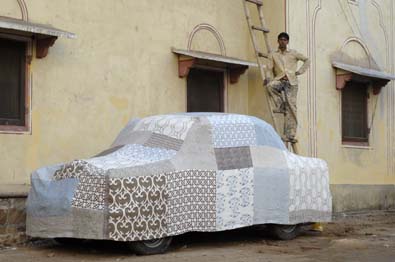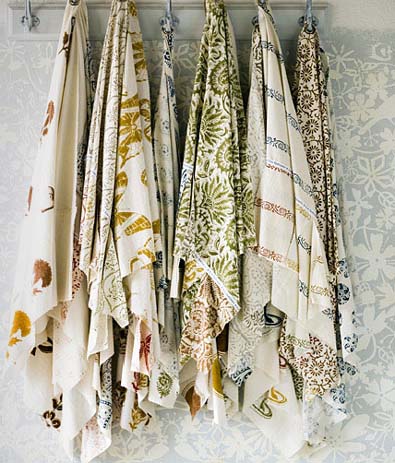Notes from the Field: A Fresh Take on Tradition
March 14, 2011
I bought my first hand-blocked fabric, a bedspread from India, at George’s Folly. During college and for a few years after, the once-vibrant retail emporium at the corner of Harvard Street and Longwood Avenue in Brookline, Massachusetts, was our go-to spot for exotic soaps (no Ivory here), candles, rolling papers, incense and the aforementioned Indian bedspread.
Most of the decor in my first apartment was cobbled together from those hand-blocked pieces. I used the bedcovers as drapes, for slipcovers and, of course, to cover the lone piece of furniture in my bedroom–a mattress in the middle of the floor. When one of the Indian bedspreads began to fray around the edges, I’d cut it up for placemats and napkins. If frequent washing left most of it in tatters, I used what remained as patches on my blue jeans.
Though my taste has changed over the years, I’m still drawn to the ancient craft of hand-blocked fabrics. With designs often inspired by nature, the fabrics are printed with hand-carved blocks, using colors usually obtained from vegetable or mineral dyes. Current hand-blocked fabrics from resources like John Robshaw and Les Indiennes are still produced in India, while others like Galbraith & Paul are reinterpreting the ancient craft here in the United States.

Car cover, assembled from John Robshaw’s newest hand-blocked prints; photo courtesy of John Robshaw

Photo courtesy of Les Indiennes
To see more from John Robshaw, visit Trillium in Nantucket, Nest in Dedham or Koo de Kir in Boston; for Les Indiennes, check out Twelve Chairs in Boston; and for Galbraith & Paul, contact Studio 534 at the Boston Design Center.
–Cheryl Katz
Share
![NEH-Logo_Black[1] NEH-Logo_Black[1]](https://b2915716.smushcdn.com/2915716/wp-content/uploads/2022/08/NEH-Logo_Black1-300x162.jpg?lossy=1&strip=1&webp=1)







You must be logged in to post a comment.